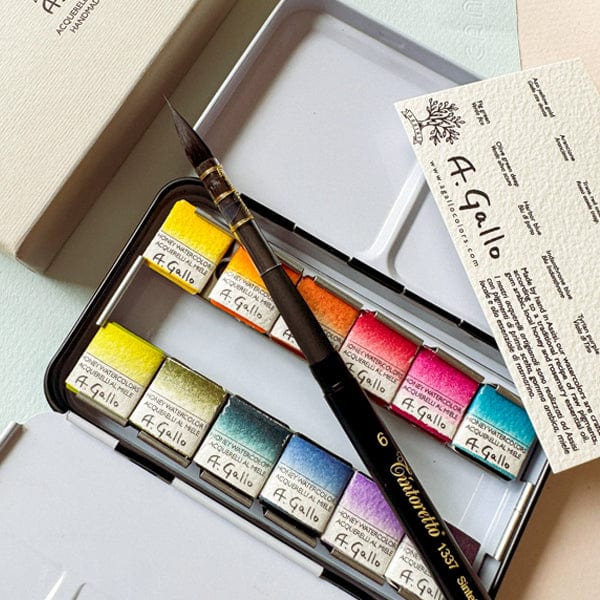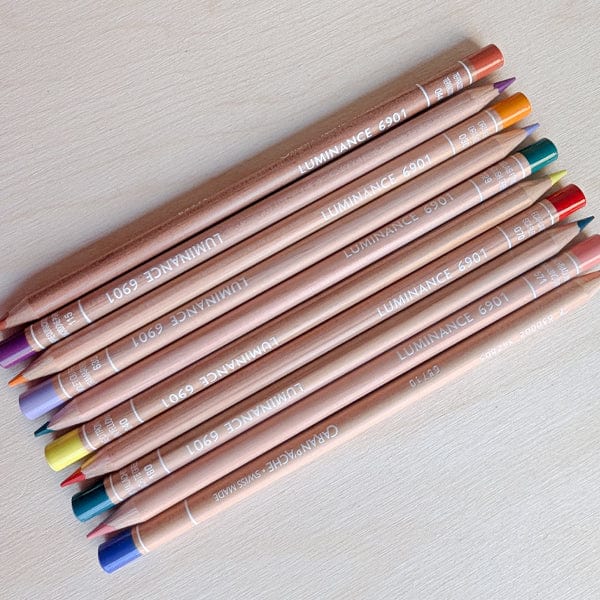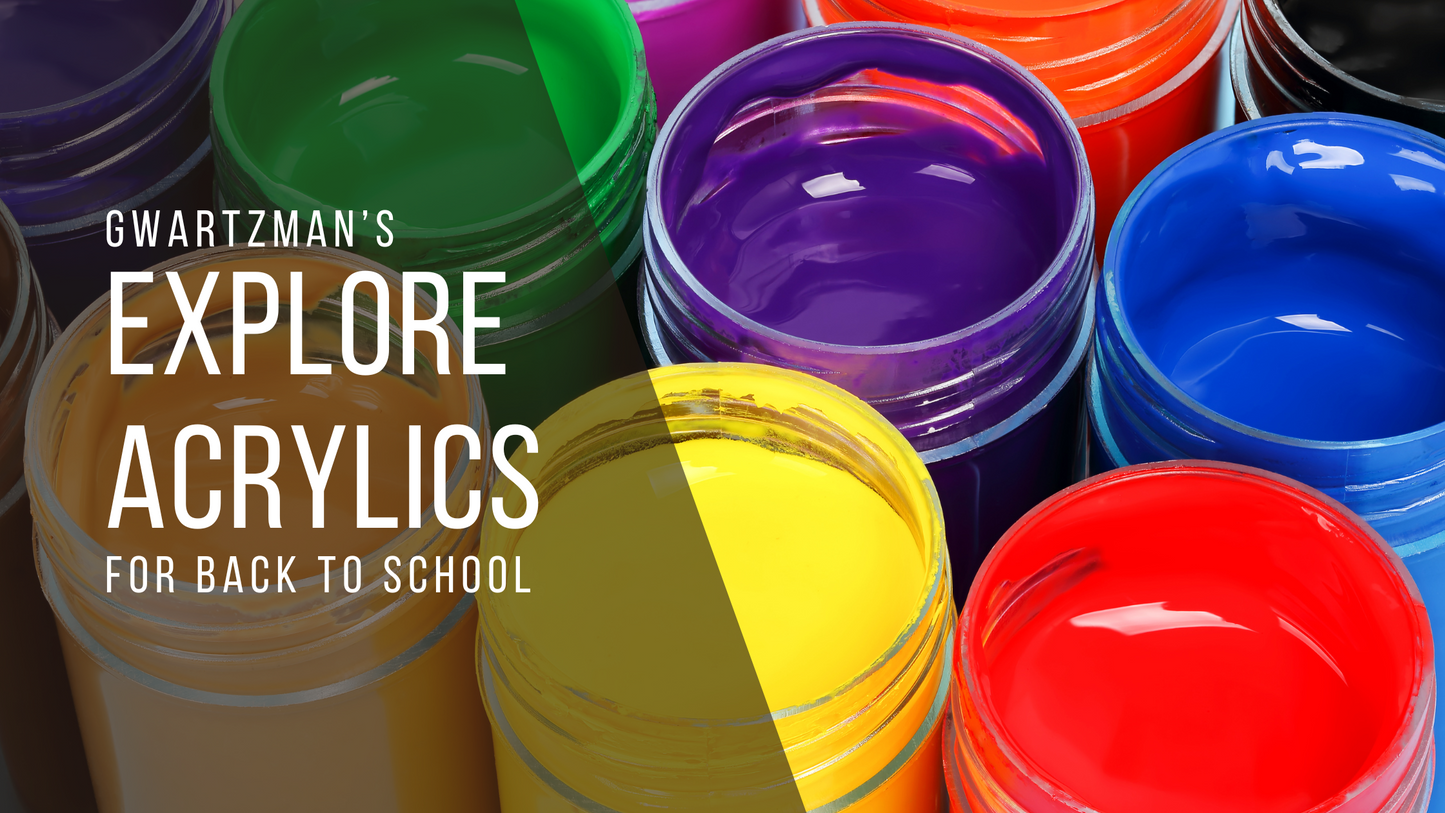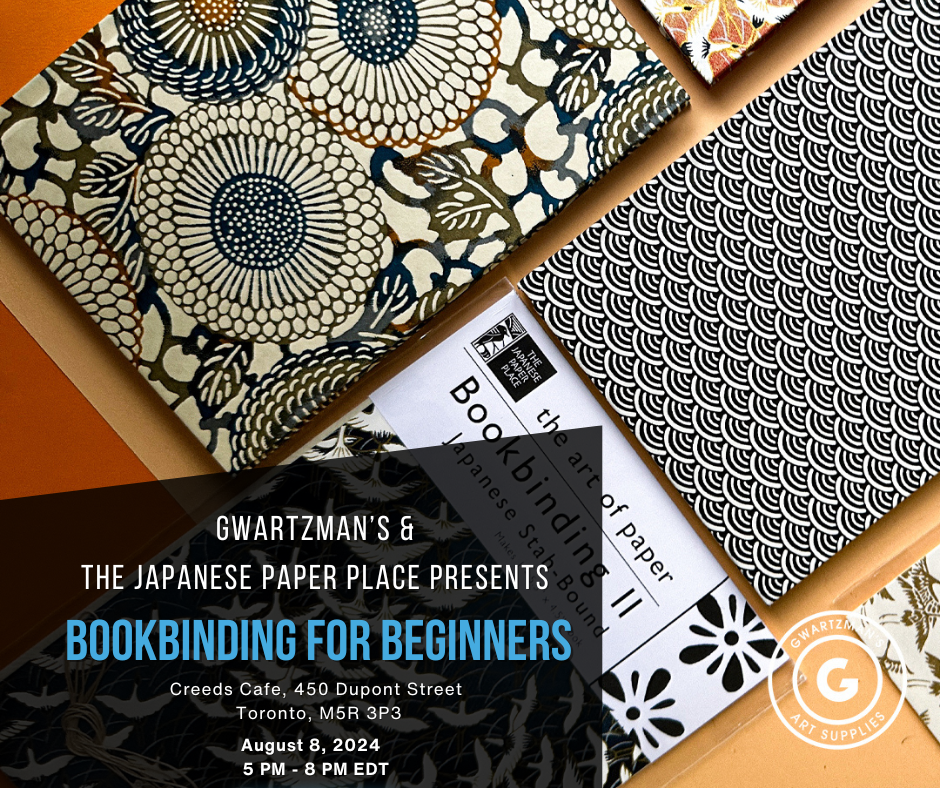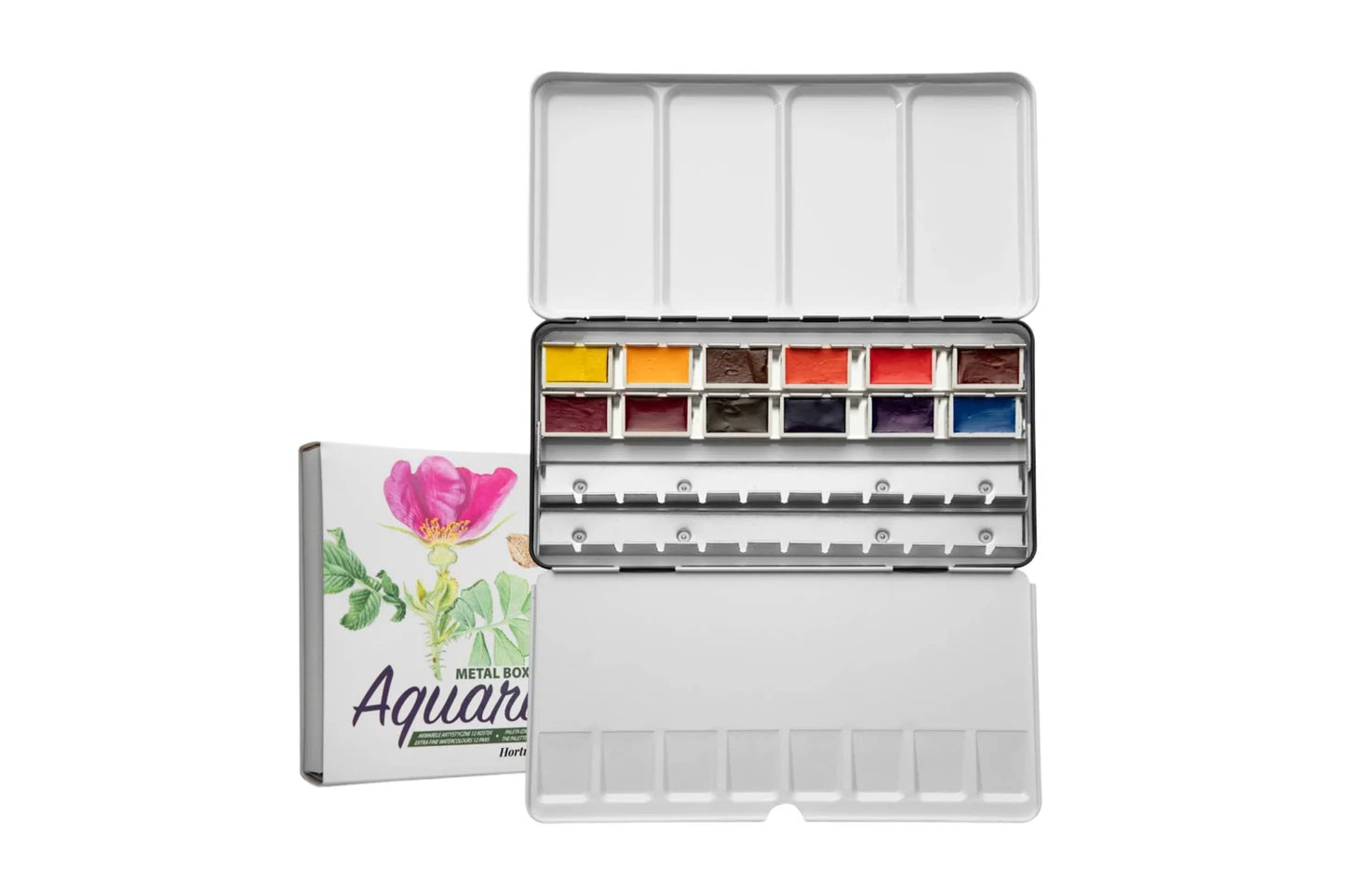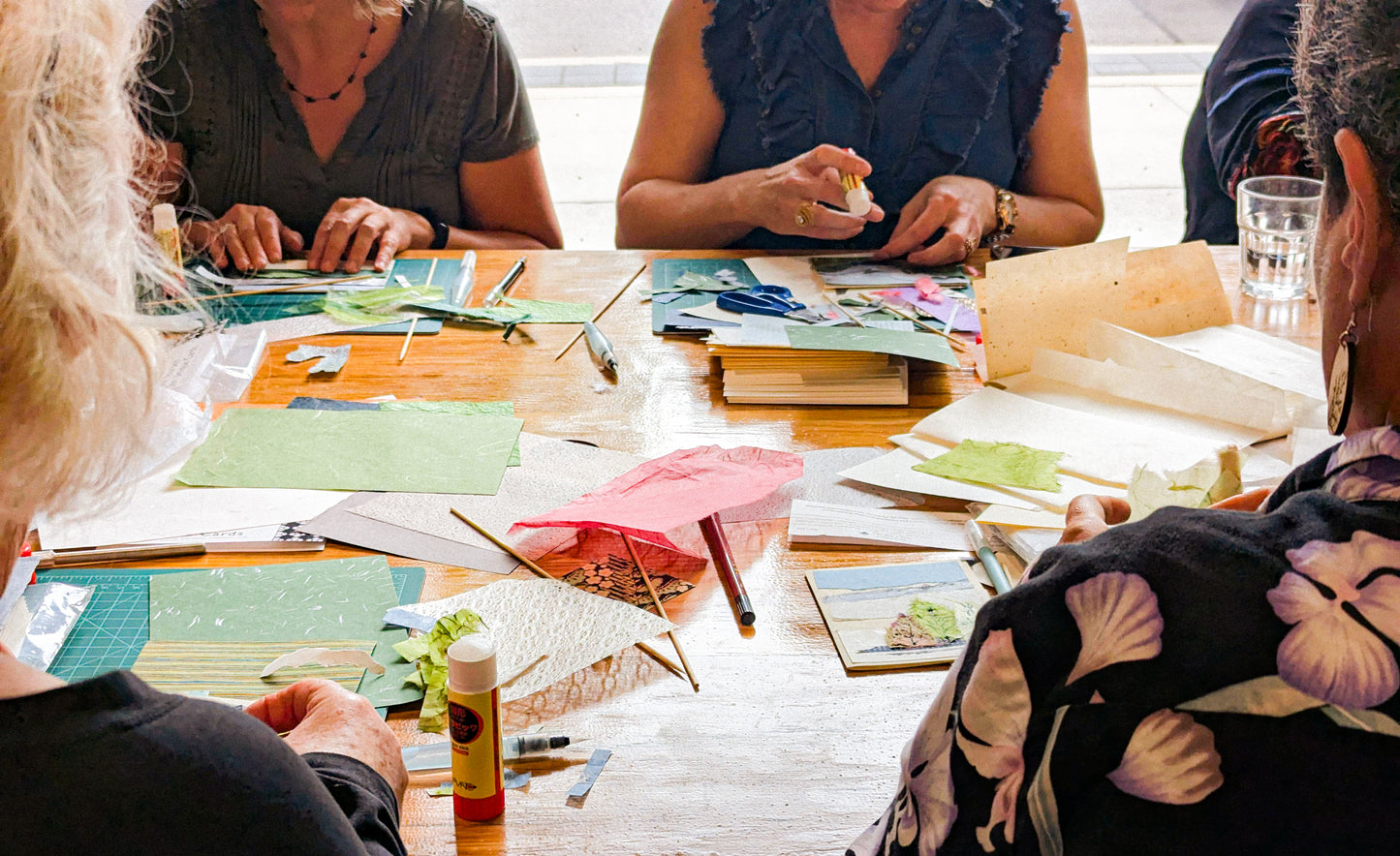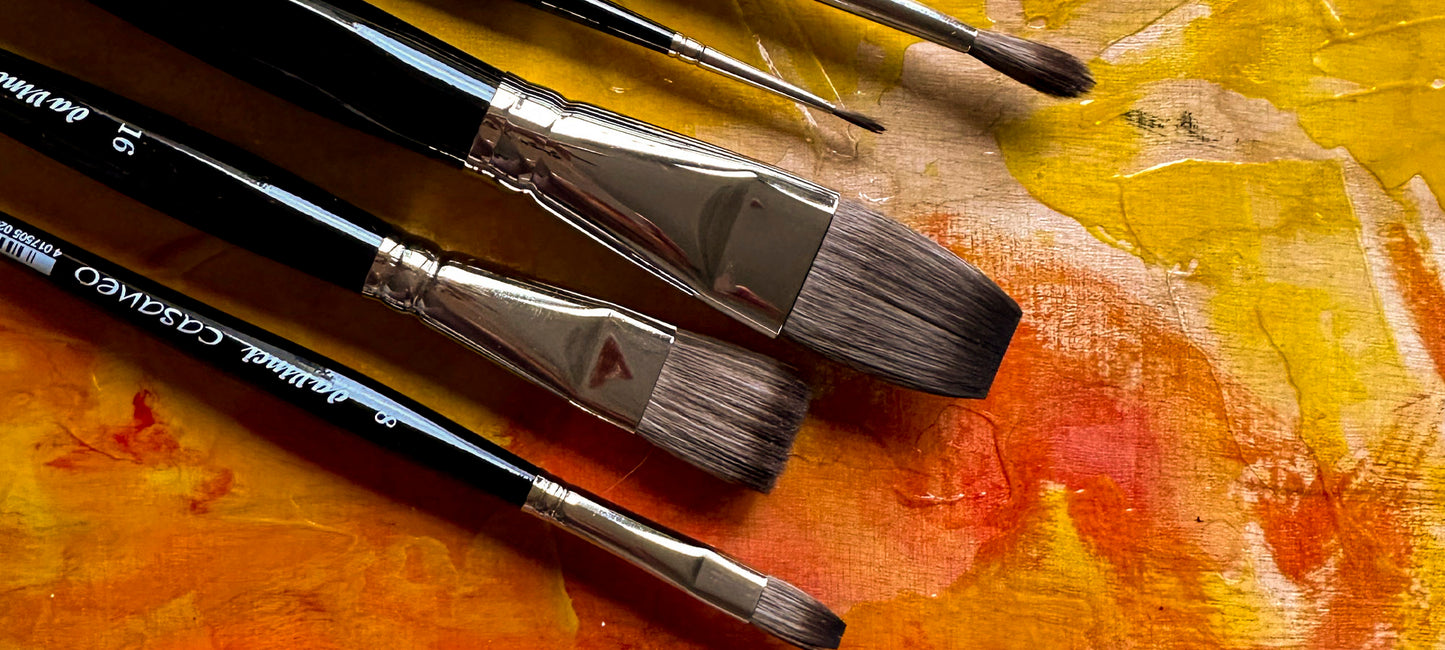
Have you ever wandered into Gwartzman’s and looked at our racks of brushes and tried to figure out what the difference was between all of them? Or maybe seeing terms on our website and wanted to know how to tell a “flat” from a “filbert”? Well, look no further! Our brush guide is here!
Common brushes:
Flat brushes
A flat brush has a long rectangular bristle shape, and is great for blocking in large masses on your canvas or paper. If turned on it’s side, you can make long, thin lines with it.

Round brushes
Round brushes have a round “belly” and come to a point and the end of the bristles. They generally hold a lot of water when used for watercolour, and the fine point allows for a good transition between a wide to fine mark-making.

Filbert brushes
Filberts are a hybrid between flats and rounds. They’re very versatile and great for general painting. The curved tip allows for soft blending.

Angle brushes
Angle brushes are another versatile brush. They are similar to a flat brush, but with an angle cut into the bristles so one side is shorter than the other. They are great at making lines, as well as shading.

Fan brushes
Fan brushes are great for adding texture, especially when painting in foliage or hair. They can also be used to smooth or blend your paint on the canvas, as well as glazing.

Mop brushes
Mop brushes resemble a makeup blush brush. They’re great for watercolor painting, and hold large amounts of water. They’re great for filling in large areas. In oils and acrylics, they’re best suited for blending.

Uncommon brushes:
Rigger/Liner/Script brushes
Riggers are long, thin round brushes. They’re also known as liner or script brushes, and hold a significant amount of paint. They’re perfect for creating long, smooth lines, without having to dip your brush back into the paint or ink. As well as creating details such as hair or grass, they can be used for signing artwork or lettering.

Cat’s tongue
A cat's tongue brush is like a more pointed filbert brush. Allows for fine detail with the tip, the side of the brush for medium strokes, and flat for wide strokes.

Dagger brush
Daggers are longer angle brushes, and can be helpful in blocking out colour, and their long, angled edge is ideal for long, thin lines and brush strokes.

The most common way to use each brush was listed here, but don’t feel restrained by that! If you feel a certain brush shape listed here is suited for a different kind of work, don’t hesitate to try it out.
What are your favourite brushes? Did we miss any that you'd like to see? Let us know below!

